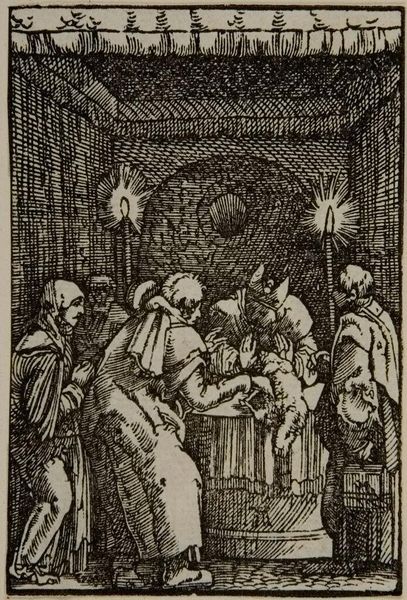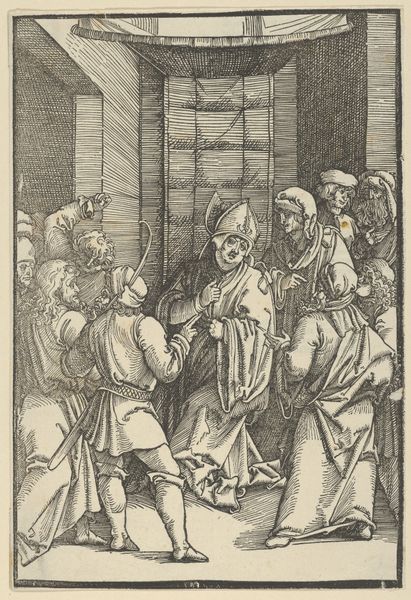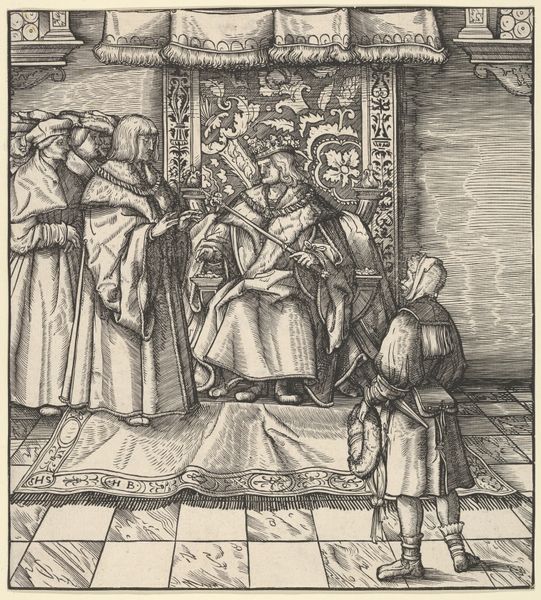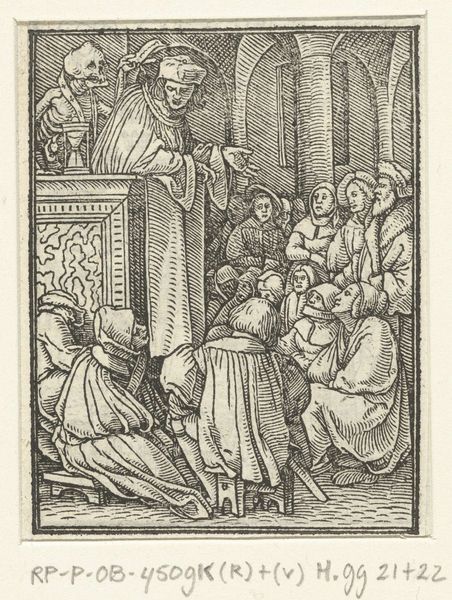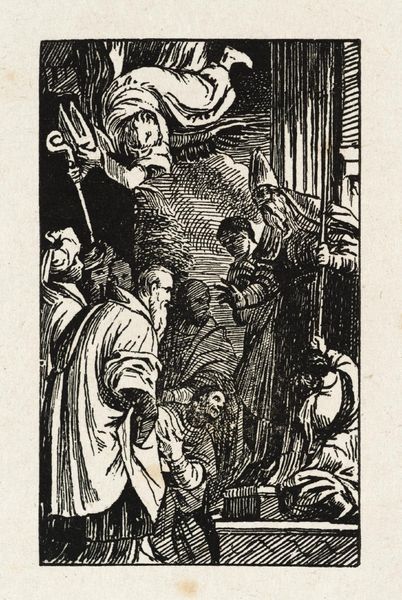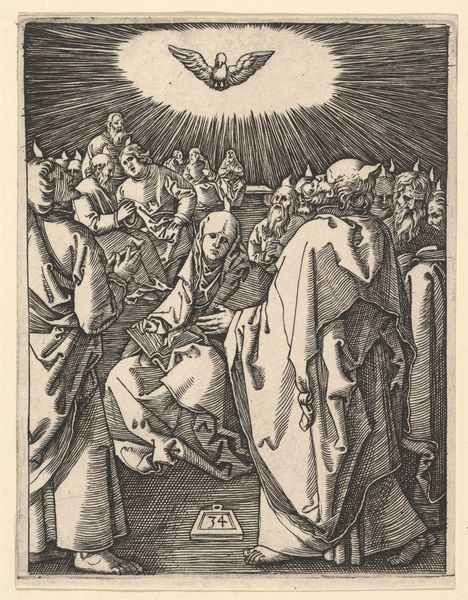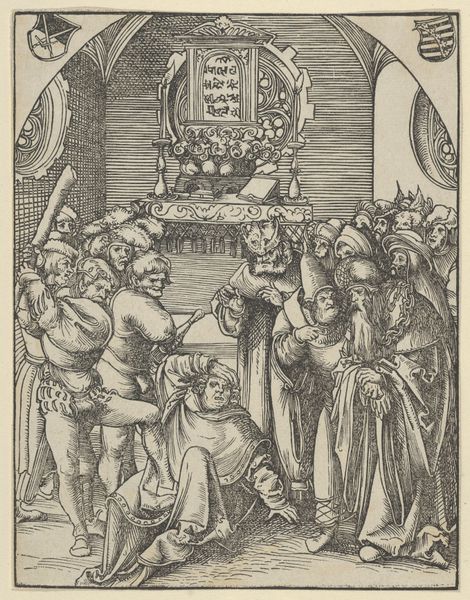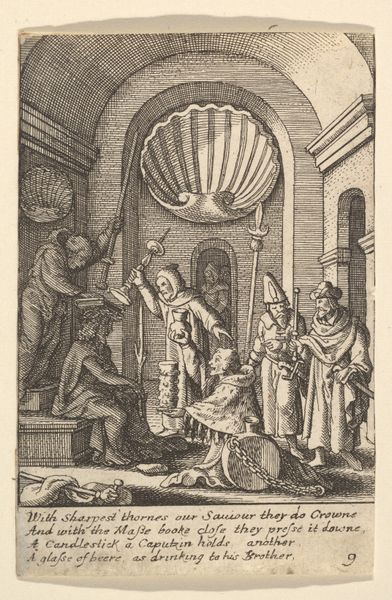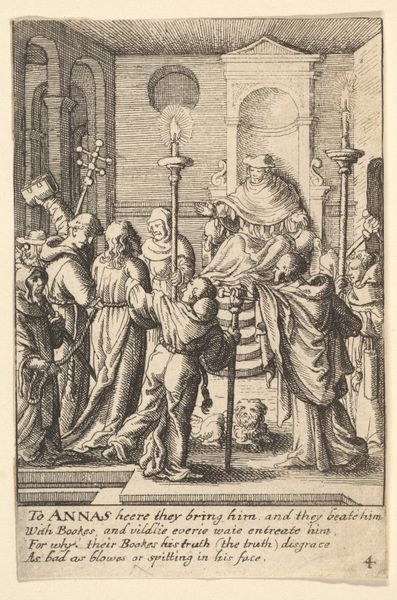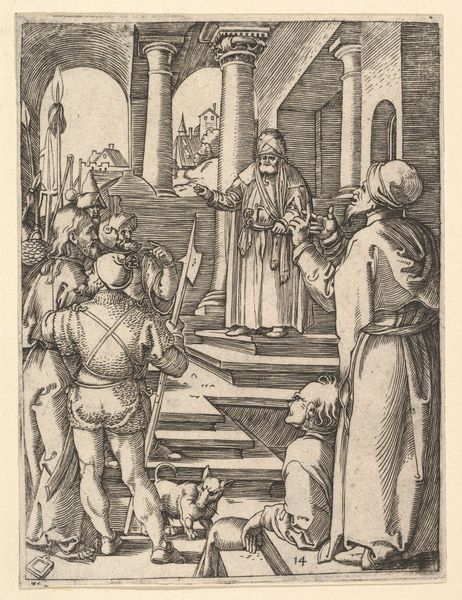
Joachim's Offering Refused, from The Fall and Redemption of Man 1513
0:00
0:00
drawing, print, paper, woodcut, engraving
#
drawing
#
pen drawing
# print
#
paper
#
woodcut
#
northern-renaissance
#
engraving
Dimensions: 172 × 149 mm (image/block/sheet)
Copyright: Public Domain
Editor: Here we have Albrecht Altdorfer’s "Joachim's Offering Refused," a woodcut from 1513, part of "The Fall and Redemption of Man." It's a rather small, detailed print. I'm struck by the tension, almost anxiety, conveyed by the figures. What do you see in this piece from a historical perspective? Curator: The refusal is quite poignant. Consider the social context: religious institutions wielded enormous power, shaping artistic production and, more broadly, dictating norms for acceptable social behavior. Joachim's offering being rejected highlights anxieties about acceptance within the community and adhering to divine law. What about the visual elements – anything stand out regarding the Northern Renaissance style? Editor: I notice the incredible detail in the cross-hatching that creates the shadows, it’s almost overwhelming. But also, the emotional weight in the faces of the figures—especially the man being turned away. Was art commonly used this way, to illustrate personal suffering in the face of social rejection? Curator: Exactly! This woodcut, and others like it, circulated widely thanks to printmaking. Think of these as early forms of political and religious commentary. The artist makes a statement on how rigid religious dogma can lead to exclusion and personal suffering. Do you think the print format itself had any bearing on this message? Editor: Perhaps the printmaking allowed for wider distribution, therefore influencing a larger audience and shaping public opinion regarding these types of rejections from the church. Curator: Precisely. This series aimed for broad dissemination, enabling direct engagement with socio-religious concerns. And note how these smaller pieces became affordable, portable, and powerful tools for communication. Editor: I see it now – it’s not just an isolated scene; it's a calculated effort to influence perceptions within the culture. Thanks for your insight into this! Curator: My pleasure. Reflecting on this work, I'm struck by how Altdorfer uses personal narrative to speak to larger societal tensions; it gives us insight into both religious life and print culture in the early 16th century.
Comments
No comments
Be the first to comment and join the conversation on the ultimate creative platform.
